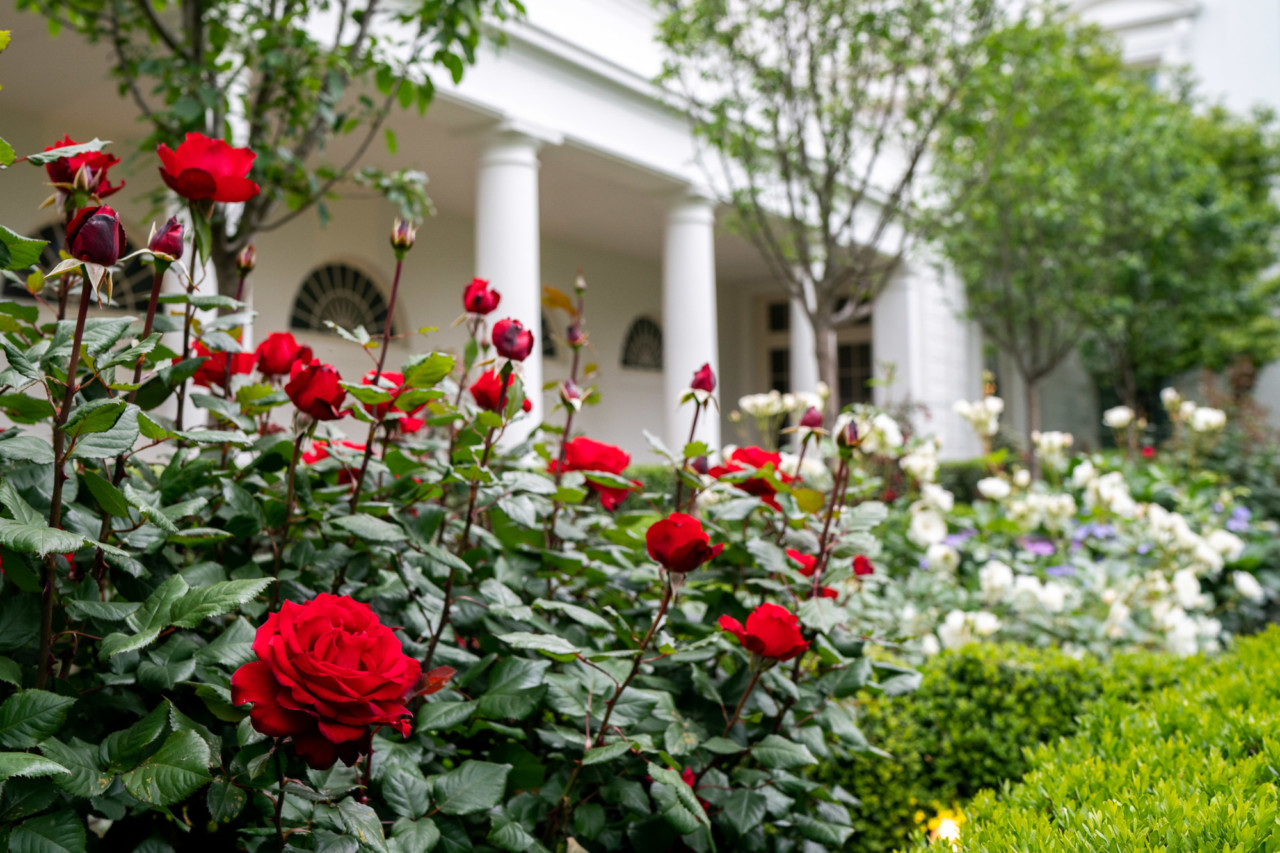
White House Rose Garden, “The Architects Newspaper” July 27, 2020
By Kathy Torres
The wheels are about to start spinning on Wingard’s 2025 SPRING SPECIALTY ROSE ORDER, and you might want to start thinking about which varieties you wish to purchase next year. Each year an order is placed in summer and the plants are shipped “bare root” in January/February. Wingard’s staff plant them (about 600 plants) in a special soil formula and by March, they are ready to be sold. By Mother’s Day, the Wingard’s Rose Garden is in full bloom! It’s a beautiful sight to behold and if you weren’t a rose lover, it’s likely you’ll become one after witnessing the gorgeous blooms and fresh, spring foliage. The inventory is quickly diminished after the plants begin to bloom, and only a handful of specimens are available after the spring/summer season.
Here is the list of roses that we have ordered:
| DAVID AUSTIN ROSES | WEEKS ROSES | WEEKS ROSES cont’d | WEEKS ROSES |
| Carding Mill | Above All | Fragrant Cloud | Marilyn Monroe |
| Darcey Bussell | All Dressed Up | Fragrant Plum | Midas Touch |
| Desdemona | All My Loving | Fun in the Sun | Neil Diamond |
| Eustacia Vye | Arctic Blue | Gold Medal | New Dawn |
| Golden Celebration | Barbra Streisand | Golden Opportunity | Oh My |
| Lady of Shalott | Burst of Joy | Good As Gold | Olympiad |
| Lichfield Angel | Celestial Night | Hot Cocoa | Painted Porcelain |
| Olivia Rose Austin | Chicago Peace | John F Kennedy | Pope John Paul |
| Roald Dahl | Chrysler Imperial | Joseph’s Coat | Pretty Lady |
| Strawberry Hill | Dick Clark | Julia Child | Queen Elizabeth |
| Teasing Georgia | Don Juan | Just Joey | Radiant Perfume |
| The Ainwick Rose | Doris Day | Ketchup & Mustard | Rio Samba |
| The Lady of the Lake | Double Delight | Lady in Red | Secret |
| The Poet’s Wife | Ebb Tide | Life of the Party | St. Patrick |
| Wollerton Old Hall | Edith’s Darling | Love | Sugar Moon |
| Love at First Sight | Tropical Lightning |
If there are certain varieties that you are interested in for next spring that are not included on the above list, contact Wingard’s to pre-order. It’s possible roses that are not on the list can be special ordered if available from suppliers. To make your request, send an email THIS MONTH to office@wingardsmarket.com or call 803.359.9091.
We call these “specialty roses” because they are particular types that have been meticulously hybridized and cultivated over the years and have specific characteristics making one very different from the other. Roses are wonderful landscape plants that are unmatched for the length of season in which they bloom and the amount of color they produce. With a variety of growth habits, sizes and fragrances, there is most likely a rose that is perfect for any sunny spot in the garden. There is a general attitude that growing roses is difficult; however, with proper planting, adequate light and correct watering practices, success can be achieved. There is nothing more rewarding than roses cut from the garden!
A basic understanding of classes of roses will help you appreciate their versatility and make selections that suit your vision for the landscape. Bloom type, growth habit, density and fragrance vary within the many groups of rose plants. Each category below pictures just a few of the varieties available.
Hybrid Teas – One of the most popular rose types, these are tall, long-stemmed roses, ideal for cutting. Flowers are usually borne one to a stem. The bush can grow 6 ft. tall with an upright habit.
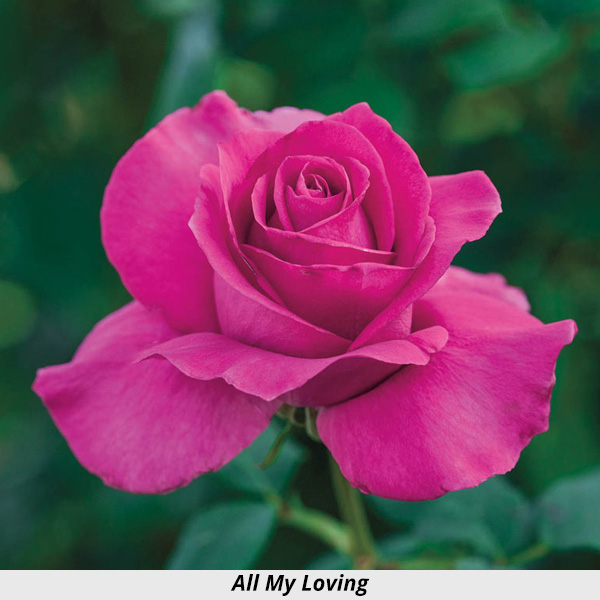
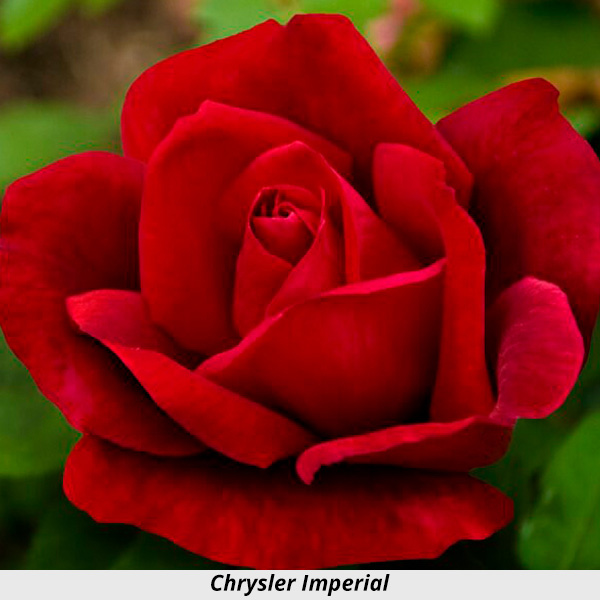
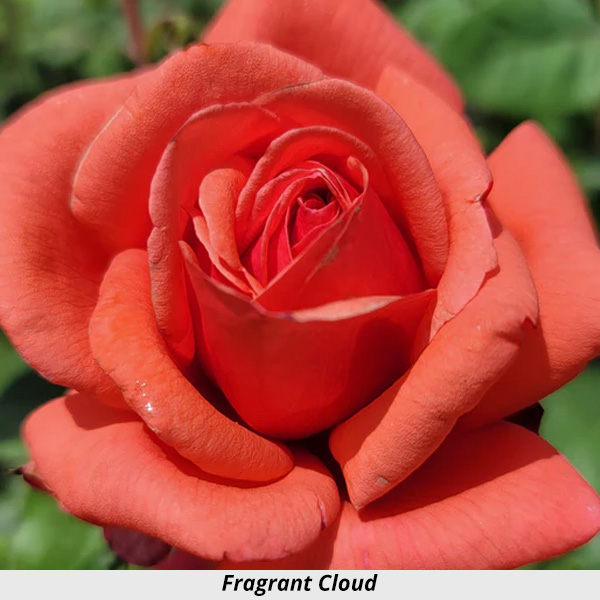
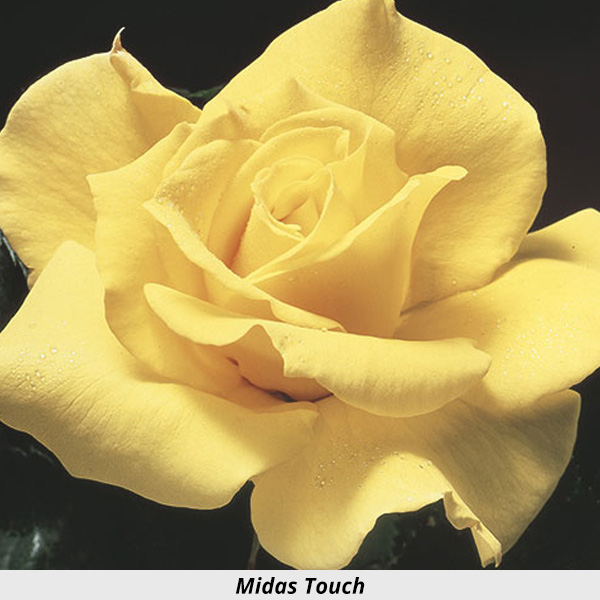
Floribundas – Choose floribundas if you need fairly low-growing plants that produce great numbers of colorful flowers. These bushy shrubs have large, showy blooms, set in clusters on short stems. Height of Floribunda rose bushes range from 2-3 ft to 5-6 ft. tall.
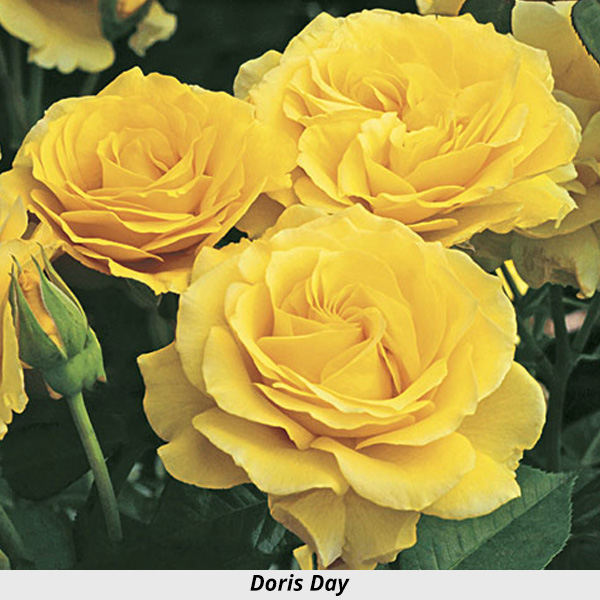
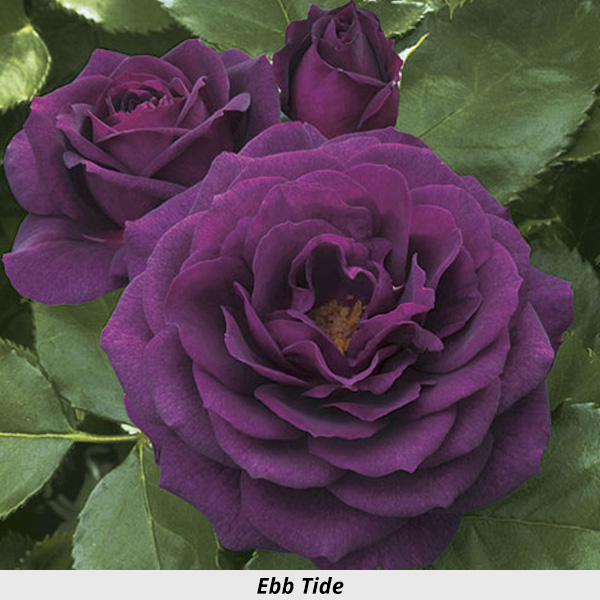
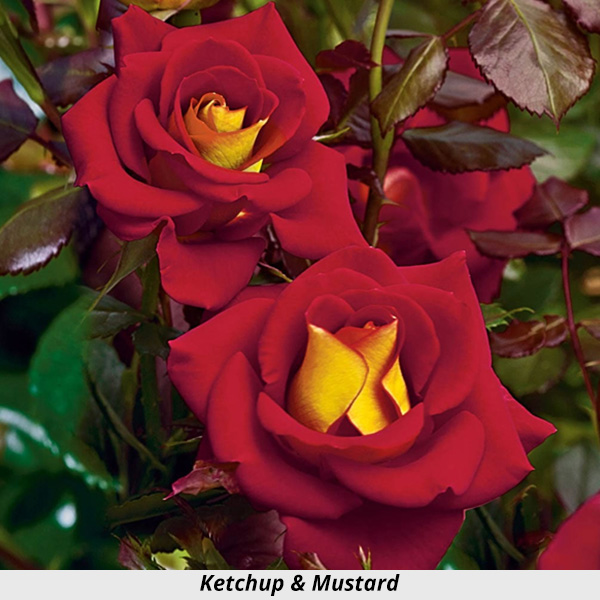
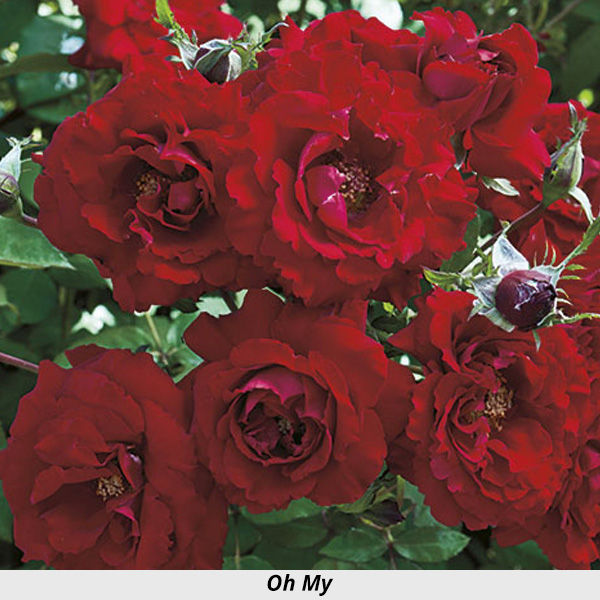
Grandifloras – A grandiflora is a cross between a floribunda and a hybrid tea rose. They generally feature classic hybrid tea flowers in clusters with stems that are slightly shorter than those of hybrid teas. Grandiflora rose bushes can reach heights of 6-8 ft.
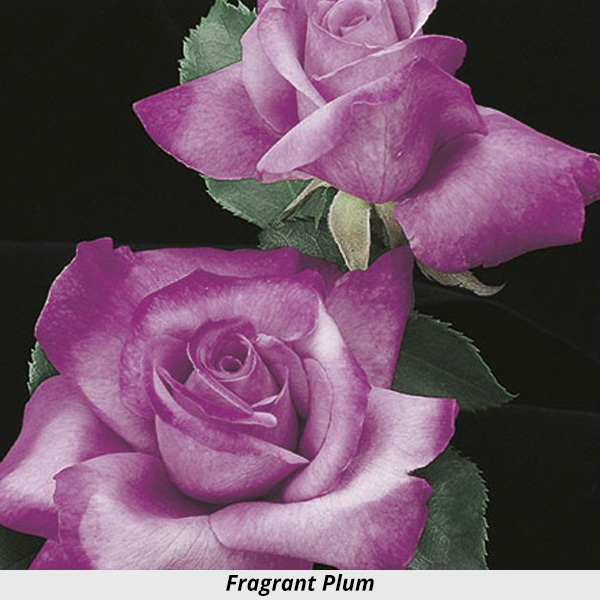
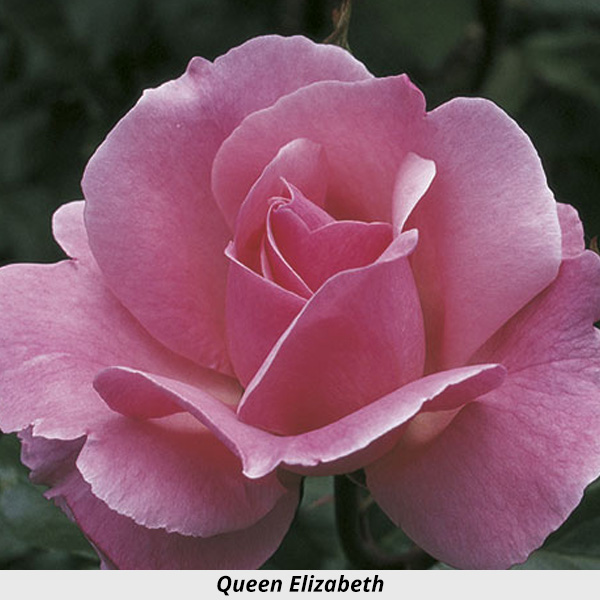
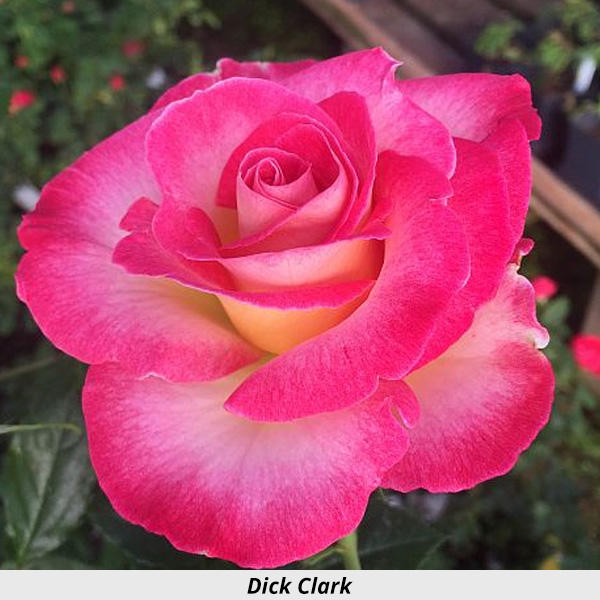
Climbing – Climbing roses are a great addition to a fence or arbor. They produce very long canes (8-10 ft. long) that must be anchored to the supporting structure. Many varieties will produce flowers throughout the blooming season.
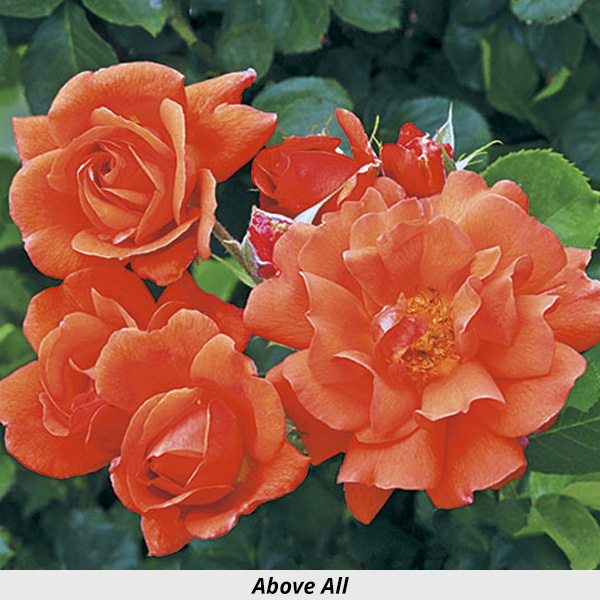
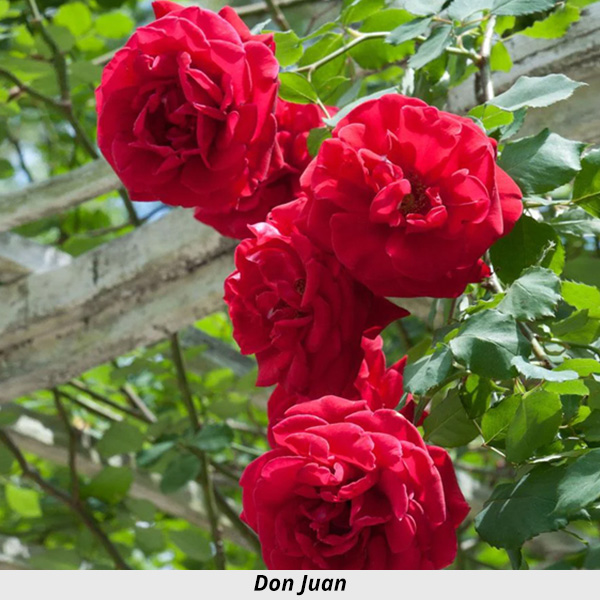
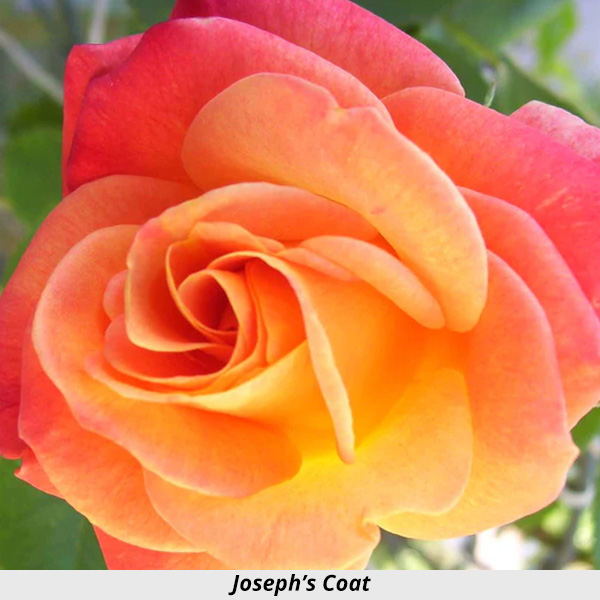
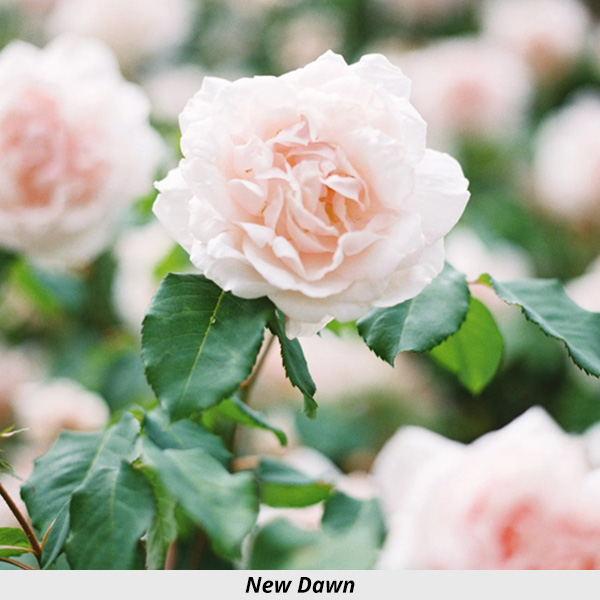
For additional details on the roses pictured above, as well as other varieties available, go to Weeks Roses.
David Austin – This collection of old English shrub and climbing roses has been bred in the United Kingdom since 1961. Known for fragrance and elegance in the garden, this line has grown in popularity and availability over recent years in the United States. Shrub varieties will grow 4 to 5 feet tall, while climbers may reach 8 to 10 feet tall. David Austin roses are known for abundant, rounded blooms.
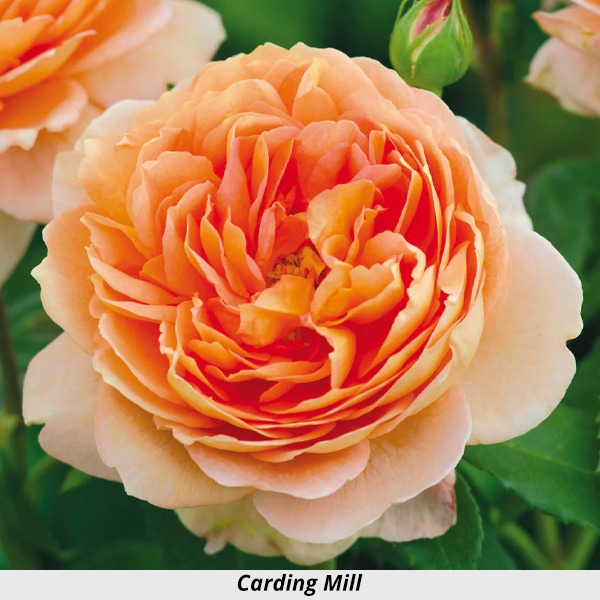
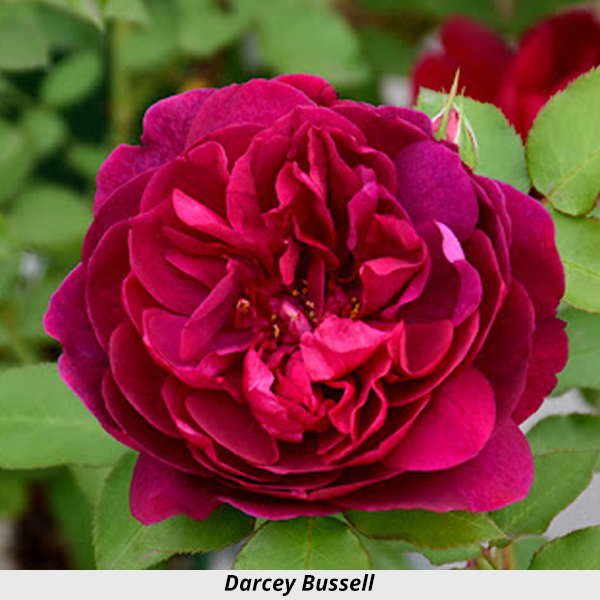
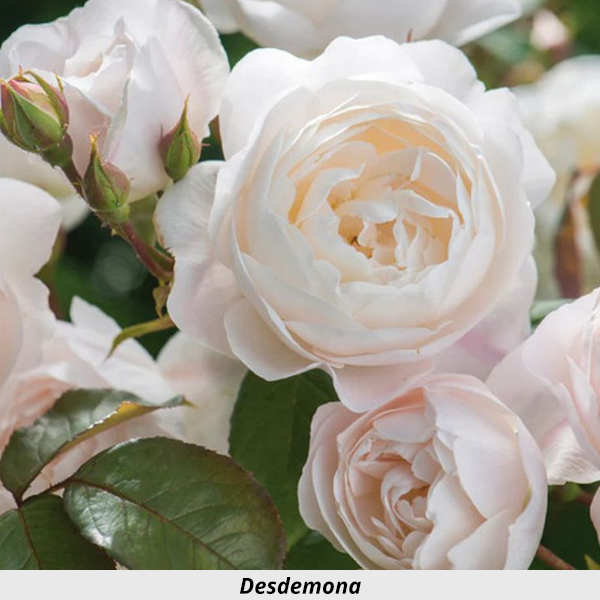
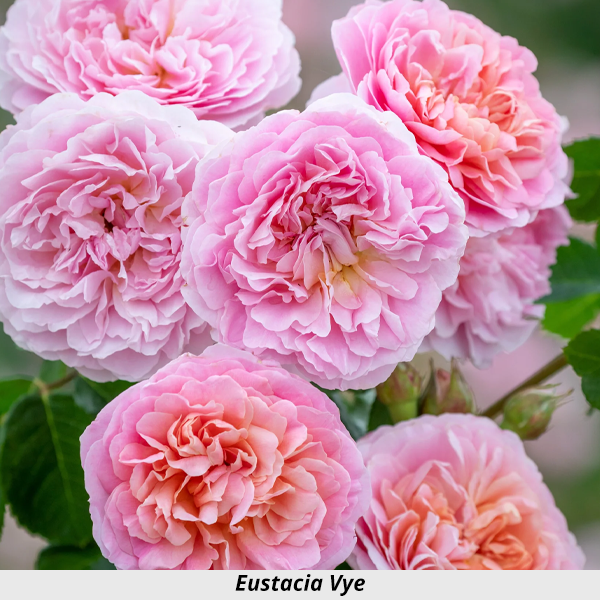
For additional details on these and other David Austin roses, click HERE
Shrub Roses – While not considered “specialty” roses, Knock-Out and Drift roses are very popular and known to be low maintenance. Knock-Out roses are profuse bloomers with large (4-5 ft. tall) and petite (2-3 ft. tall) varieties, while Drift roses are compact and small (2-3 ft. tall) repeat bloomers. Both have a dense, shrub-like growth habit and are great for borders or in groupings. These are available throughout the growing season. Check out these websites for more information on Knock-Out and Drift Roses… www.knockoutroses.com and www.driftroses.com.
Now that you have seen a few of the 2025 rose varieties that will soon be on order, you should understand how to plant and take care of roses, if you have never planted them.
A Bit of Rose Terminology – Roses consist of roots that take up water and nutrients, and canes (stems) that grow from the crown of the plant (where the canes end and the roots begin). The branching canes grow from the bud eyes that sprout at intervals along the primary canes. The leaves are usually produced in five-leaf leaflets.
Choosing a Planting Site – Select a spot that receives a minimum of 5-6 hours of direct sun each day. Check for drainage by digging a hole and filling it with water. The hole should empty within several hours. Improve drainage with tilling or making raised beds. Don’t plant near large trees or shrubs; they will compete for light, water and nutrients. Don’t plant under eaves or gutters to avoid damage from falling water, snow or ice.
Planting a Container Grown Rose – Dig a hole 2 times the size of the nursery pot. Amend soil as needed by adding organic matter to sandy soil or by adding soil conditioner to clay soil. Carefully loosen the soil around the root ball. Place the root ball in the hole, so that the top of the root ball is about 1 inch above ground level (to allow for settling). Work the amended soil around the roots to eliminate any air pockets. Water thoroughly and add mulch to help retain moisture. When planting more than one, space 2-3 feet apart (or more depending on the mature width of the plant).
Watering – Consistent watering and proper drainage are vital for roses to flourish. Roses should be watered deeply (1-2 inches per week). This will encourage strong root growth. Even in winter, occasional watering during dry periods will help them perform better during the next growing season. Avoid wetting the foliage to help prevent disease. Water more frequently in sandy soil, less frequently in clay soil.
Fertilizing – In general, roses need frequent applications of fertilizer to keep them growing vigorously and blooming repeatedly. Soil pH is extremely important. Roses prefer a slightly acidic soil with a pH in the range of 5.6 to 7.2. Start fertilizing established plants in early spring before growth begins and repeat every 4-6 weeks during the growing season. Be sure to follow application directions.
Common Pests & Diseases:
- Black Spot – Fungus caused by excessive moisture, poor drainage.
- Thrips & Aphids – Insects that feed on buds and flower petals causing browning and deformed buds.
- Japanese Beetles – The adult stage of grubs, these insects can destroy foliage and blooms overnight. Thankfully, their stay in the garden is temporary, usually in June.
Preventive measures can be taken to avoid or minimize these problems. Pick up prunings and apply fresh mulch to prevent Black Spot. Use Neem Oil Spray in the winter to smother insect eggs and to kill disease spores; apply Ferti-lome 2-in-1 Systemic Disease & Insect Control during the growing season. Many chemical, as well as organic treatments are available if the problems persist. While chemical products are highly effective, they will eliminate both the bad and the good insects. Always spray/apply in late evening to avoid killing bees and pay attention to temperature requirements during extreme heat.
To learn about pruning roses, see our existing Wingard’s Blog HERE.
In my opinion, a rose is the perfect flower. Not only is it complex and beautiful, it can also speak to us. It conveys love and affection, as well as sympathy. It is a centerpiece for a celebration or special occasion. It expresses thanks and appreciation. I think everyone should have at least one rose bush planted in a special place in the yard. And if you really get inspired by that one, plant a whole rose garden! Think about it and make your plans for spring 2025. Contact Wingard’s and pre-order now!

